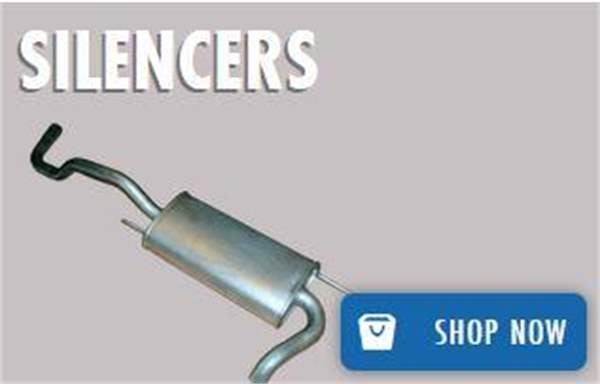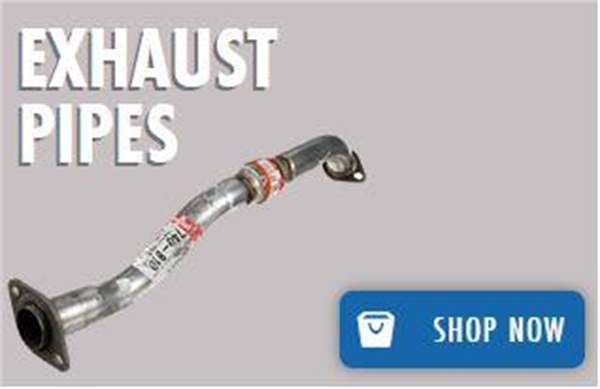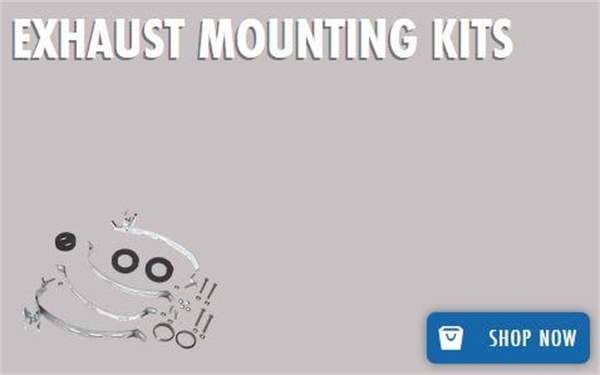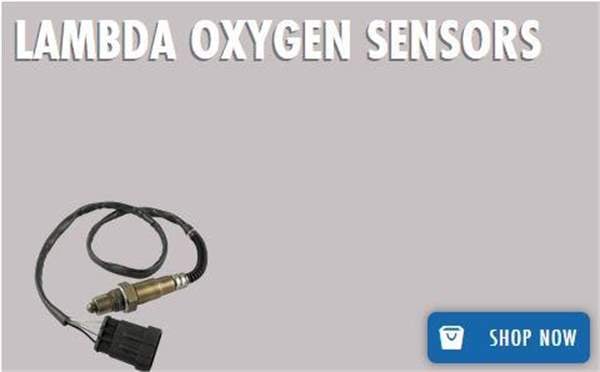The Exhaust System
The exhaust system has 3 very important functions:
- Directs the exhaust fumes from the engine to the back of the vehicle.
- Reduces the amount of toxic chemicals in the fumes to reduce emissions.
- Reduces the noise from the series of explosions that happen during the fuel combustion process.
It is made up of a series of chambers and pipes, begins at the engine and extends to the very back of the vehicle. The vast majority of vehicles have 4 cylinder engines with a single exhaust running the length of the vehicle. However high performance vehicles such as V8's can have twin exhausts as shown in the image below.
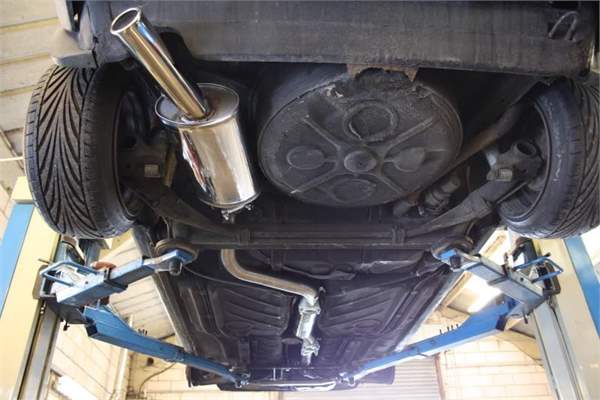
Standard single exhaust on a 4 cylinder engined car
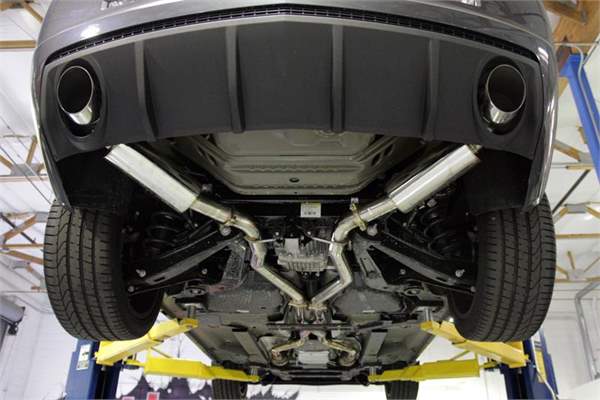
High performance twin exhaust on a V8 engined car
While most of us will only see the tail pipe (the very end) of an exhaust system, the average length of one is about 3 metres and consists of 6 main components depending on the fuel it consumes:
- Exhaust Manifold
- Oxygen Sensor
- Catalytic Converter
- Diesel Particulate Filter
- Exhaust Pipe
- Muffler / Silencer
Benefits of a Healthy Exhaust System
- Maintains fuel efficiency and engine performance.
- Keeps engine noise to a minimum.
- Converts dangerous chemicals in the exhaust fumes to less harmful ones.
Common Problems with the Exhaust System
The main culprit for exhaust damage or wear is rust and it can cause a multitude of problems. Depending on the severity it can lead to complete exhaust failure or structural damage.
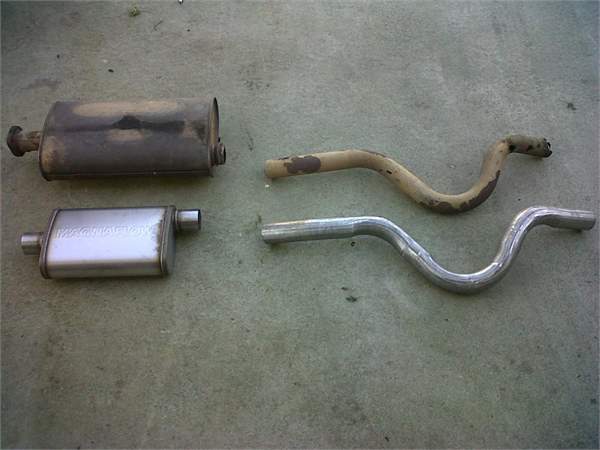
New vs Old Rusty Exhaust
In rare cases the exhaust pipe can become so eroded or damaged that it will become loose and start dragging on the road. If this happens you should take your vehicle to the nearest mechanic or exhaust specialist. If it is not safe to drive the vehicle you should ring for road side assistance and take care not to inhale any of the toxic fumes.
If you hear rattling under the vehicle it could mean something has become loose such as a bracket, heat shield or a piece of exhaust pipe. It's important to get your exhaust system examined if this is the case. Loose exhaust parts or missing brackets can put additional structural stress on the exhaust system and damage other expensive components. We supply a wide range of
exhaust mounting kits to repair such damages.
Did you know? Going on several short journeys in your vehicle can accelerate exhaust erosion. After a short drive the water vapor cools and turns back into a liquid leading to a higher chance of rust formation.
Exhaust Components
1. Exhaust manifold
Exhaust manifolds are located on the engine of a vehicle. Their function is to collect the exhaust gases from the engines cylinders and guide it through the rest of the exhaust system. It ensures that the
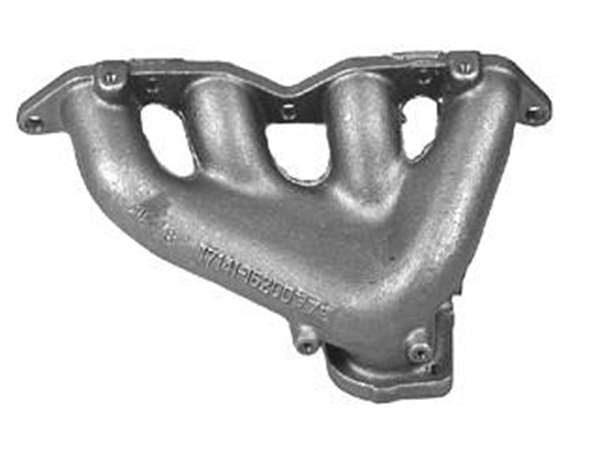
toxic gasses do not enter inside the vehicle to the passengers.
Common Problem: Exhaust manifolds are prone to damage from one of two things. The first is the exposure to cycles of extreme pressure and heat. The manifold then becomes so worn that it is unable to withstand the heat and cracks begin to form. Cracks can develop into small holes causing complete failure. The second reason is when the exhaust system hangers or mountings break and the exhaust manifold is put under extra pressure that it is not designed for.
2. Oxygen Sensor
These sensors are normally located on either side of the catalytic converter. Their function is to measure the amount of oxygen in the exhaust system. It uses this information to add or reduce fuel in the combustion process to
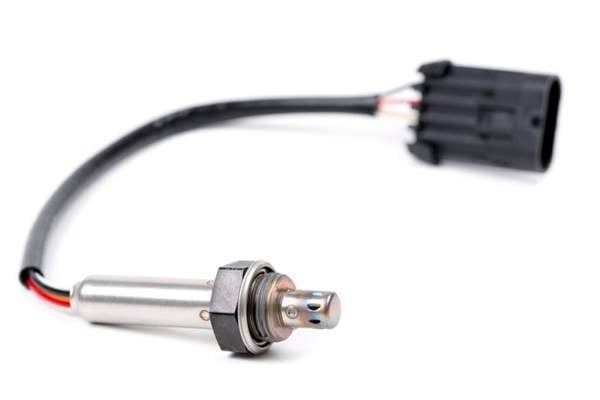
get the best fuel to air mixture.
Common Problem: Oxygen sensors can become worn and give less accurate measurements over time. Modern vehicles will have an alert on the dashboard when the sensor is malfunctioning. Replacing them can save a considerable amount of money in the long run as oxygen sensors are vital for fuel economy.
3. Catalytic Converter
Catalytic converters are found between the manifold and the silencer. Their function is to convert pollutants in the exhaust fumes to less harmful ones.
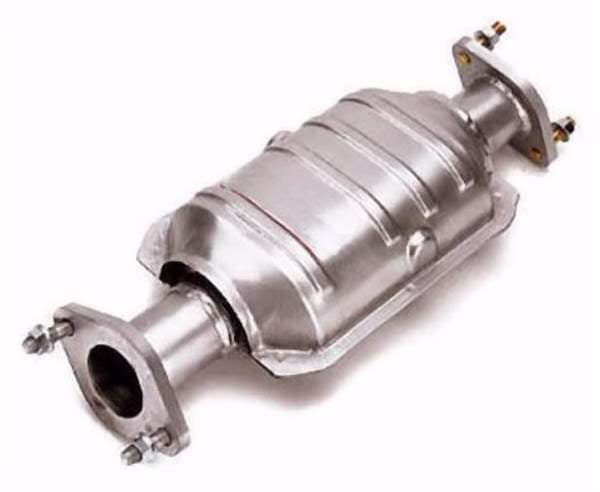
If one was fitted to your vehicle originally, a catalytic converter is required by law and it will fail the NCT or MOT if it is removed.
Common Problem: Catalytic converters can become blocked or choked. The symptoms of a blocked catalytic converter are a noticeable lack of power, a sense of heat from the floor of the vehicle or a smell of sulfur (or rotten eggs).
4. Diesel Particulate Filte (DPF)
Their functions is to remove the particulate matter or soot from the exhaust gas of diesel engines.

The introduction of the
Euro 5 emission regulation in 2009 meant that diesel vehicles would require the fitment of a DPF to meet the new emission standards.
Common Problem: Due to their purpose DPF's can become clogged over time and in extreme cases may need to be replaced. DPF's go through a process called regeneration which aims to clear out the soot but in order for it to go through this process specific driving conditions have to be met. There is a danger that it can become clogged beyond the ability of the engine managements ability to clean it.
Driving diesel vehicles short distances without the engine heating up sufficiently is likely to lead to clogged DPF problems. To prevent this from happening additives such as the
JLM Diesel DPF ReGen Plus can be added to the fuel. It is ideal for use on vehicles that are often driven on short journeys or around towns. Alternatively a long drive on a motorway while holding the engine at higher RPM (i.e. use a lower gear than normal whilst sticking to the speed limit) can help it to begin the regeneration/cleaning cycle.
If the DPF is already blocked then the
JLM Diesel Particulate Filter Cleaner can be used. Simply add the entire contents of the 100ml bottle to a full tank of diesel. The concentrated formula is extremely effective and is designed to be used when the amber DPF warning light is illuminated on the vehicle's dashboard.
Muffler (also known as a Silencer)
Mufflers are located toward the end of an exhaust system. Their function is to reduce the noise that comes from the fuel combustion process and

direct the fumes out of the exhaust system. It does this by using perforated tubes that create opposing sound waves that cancel each other out.
Common Problem: If the silencer is damaged it will make the vehicle sound considerably different or louder. Examining the muffler can help to determine if it's working correctly. Check for holes or rust, if there are signs of rust it may indicate a more serious problem within the muffler. Be careful not to touch an exhaust pipe while it is still hot.
Exhaust Pipes
The components outlined above are all linked by exhaust pipes and their function is to direct the gas through the various parts before it exits from the tail pipes 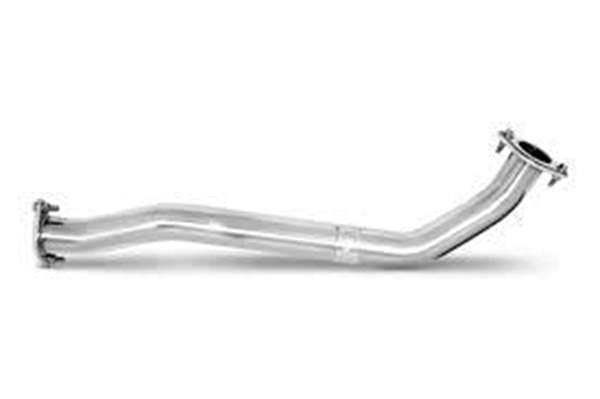 at the end.
at the end.
Common Problem: As mentioned above rust is the main culprit when it comes to exhaust damage or erosion. The linking exhaust pipes can become so rusted that small holes form.
